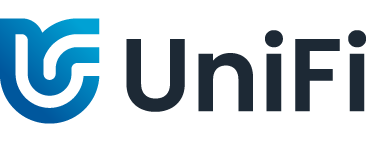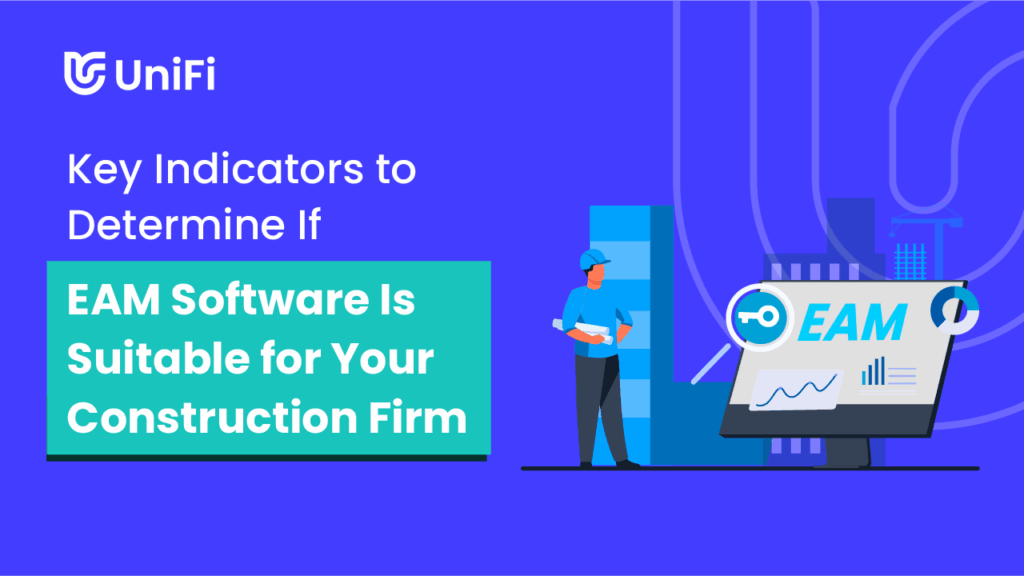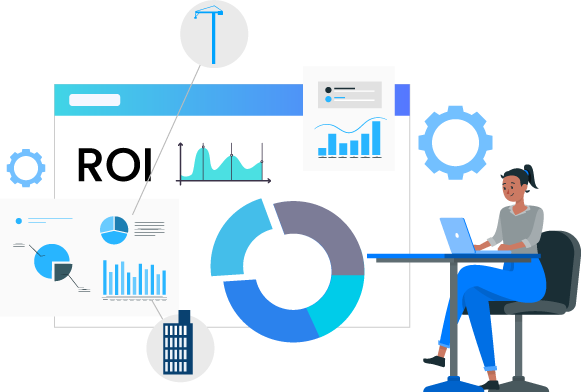As construction projects become more intricate, the need for effective tools to manage assets, equipment, and resources has never been greater.
The right Enterprise Asset Management (EAM) platform, such as UniFi EAM, can be a game-changer for a construction firm, offering solutions to streamline operations, enhance productivity, minimise downtime, reduce costs, and improve overall project management.
However, determining whether a particular software solution is suitable for your construction firm involves careful consideration.
This article explores essential factors to help you assess whether construction asset management software aligns with your firm’s specific needs and goals.
1. Scalability and Adaptability
Flexibility in the scalability of the software and its ability to adapt to the unique demands of your projects is important.
If your construction projects involve multiple sites, a large number of operational assets, and intricate logistics, a robust software solution becomes imperative.
However, the software should be able to scale down to meet the needs of smaller projects without sacrificing functionality.
Additionally, the right EAM system for a construction company should be able to handle the intricacies of managing diverse assets across various projects simultaneously.
Solutions that can accommodate growth and evolving project requirements will ensure that your investment remains relevant over time, aligning with the expanding needs of your construction firm.
2. Asset Tracking and Utilisation
Effective construction asset management hinges on the ability to track and optimise asset utilisation.
If your firm struggles with keeping track of equipment location, usage, and maintenance schedules, an EAM system can provide the solution.
Look for software that offers real-time asset tracking, allowing you to monitor the movement and usage of equipment across different project sites.
Optimal asset utilisation leads to improved efficiency and cost savings.
By analysing data on equipment downtime, usage patterns, and maintenance histories, Enterprise Asset Management software for construction companies empowers your firm to make data-driven decisions that enhance overall productivity.
3. Maintenance and Lifecycle Management
Construction equipment is a significant investment, and its proper maintenance is essential for longevity and cost-effectiveness.
If your firm faces challenges in managing maintenance schedules, predicting equipment failures, or extending the lifecycle of assets, construction asset management software can be a valuable tool.
Look for a platform that provides comprehensive maintenance management features, including automated scheduling, preventive maintenance alerts, and historical maintenance records.
By implementing a proactive approach to equipment maintenance, your firm can minimise downtime, reduce repair costs, and extend the lifespan of critical assets.
4. Integration with Other Systems
When choosing EAM software for construction firms, it’s important to consider its ability to integrate with other systems you use seamlessly.
This ensures a cohesive ecosystem which helps in better decision-making and resource allocation.
For instance, the software should integrate with your accounting system to provide up-to-date financial data.
Another example is if your firm relies on project management systems to plan and execute construction projects, the EAM solution should integrate with your project management software to provide a comprehensive view of project progress and asset utilisation.
Integration ensures that asset data is synchronised with project timelines, resource allocations, and task dependencies. It streamlines operations and enhances data accuracy, leading to improved decision-making and overall project management.
5. Compliance and Safety Features
Construction projects come with a myriad of safety regulations and compliance requirements.
If your firm struggles to stay compliant with industry standards or faces challenges in ensuring the safety of workers and equipment, an EAM tool with robust compliance and safety features is essential.
Look for a solution that includes features such as safety checklists, regulatory compliance tracking, and incident reporting.
The ability to monitor and enforce safety protocols not only ensures a safer work environment but also mitigates the risk of regulatory fines and legal issues.
6. User Training and Adoption
The successful implementation of any system relies on user adoption.
If your firm is concerned about the learning curve and potential resistance from employees, consider software solutions that offer comprehensive user training resources.
Intuitive interfaces, mobile access, user-friendly dashboards, and readily available support contribute to faster adoption and maximise the benefits of the software.
Prioritise solutions that provide ongoing training and support as new features are introduced or when updates are implemented.
The ease with which your team can adapt to the new software directly impacts its effectiveness in optimising asset management processes.
7. Return on Investment (ROI)
Ultimately, the decision to invest in an enterprise asset management system for your construction organisation should be justified by a positive return on investment.
Assess the potential ROI by considering factors such as increased operational efficiency, reduced equipment downtime, lower maintenance costs, and improved project timelines.
Evaluate the total cost of ownership, including upfront costs, implementation fees, and ongoing maintenance expenses, against the tangible benefits the software promises to deliver.
A thorough cost-benefit analysis will help you make an informed decision about the financial viability of implementing this type of software for your construction firm.
Conclusion
Construction asset management software can be a transformative tool for construction firms seeking to enhance efficiency, optimise resource utilisation, and improve project outcomes.
By carefully assessing the indicators discussed above, you can determine whether a particular EAM software solution is suitable for your firm.
UniFi Enterprise Asset Management
UniFi Enterprise Asset Management (UniFi EAM) provides a collection of next-gen Apps to manage the entire lifecycle of your organisation’s assets, from planning, budgeting, procurement, project management, inventory, performance, maintenance, compliance, and risk management, through to disposal.
Unifi EAM ticks the boxes for all the indicators above — scalability, asset tracking capabilities, maintenance management features, integration with other systems, compliance and safety features, user training, return on investment, and more.



